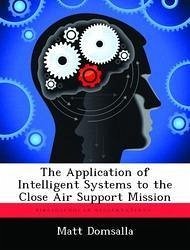The US is clearly moving toward developing an autonomous attack capability, and the intelligent systems to provide battlefield situational awareness will be a key enabling technology for this autonomous attack capability. Within the close air support (CAS) environment, the application of intelligent systems could facilitate the tasks of joint terminal attack controller (JTAC) and the CAS command and control (C2) system. Associated-based systems can provide the JTAC and CAS C2 structure with the intelligent systems for battlefield situational awareness. Both associate systems would utilize an assessor, planner, and interface framework. These systems could be utilized to aid the JTAC in developing attacks and make the C2 process more efficient, thus making the overall CAS system more effective. An associate-based CAS system would make optimal use of available air assets and be less likely to result in fratricide or collateral damage while also ensuring adherence to the rules of engagement. This paper will examine associate systems and CAS operations along with the application of associate systems to the JTAC and CAS C2 process and the associated doctrinal implications.








